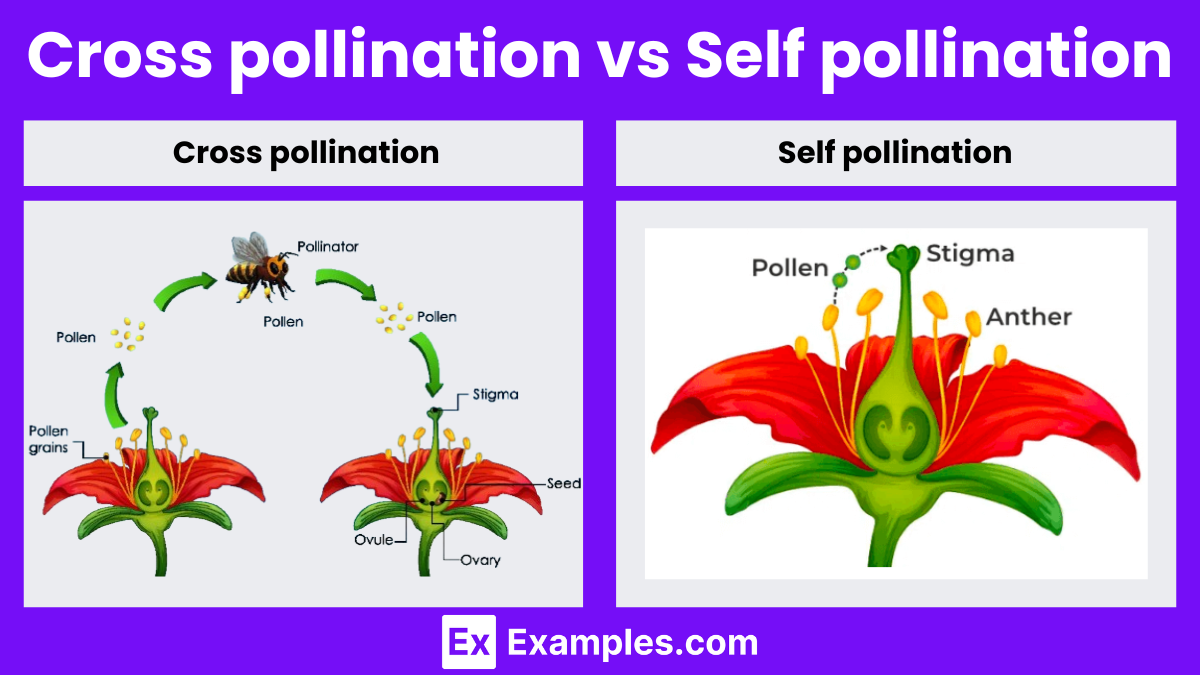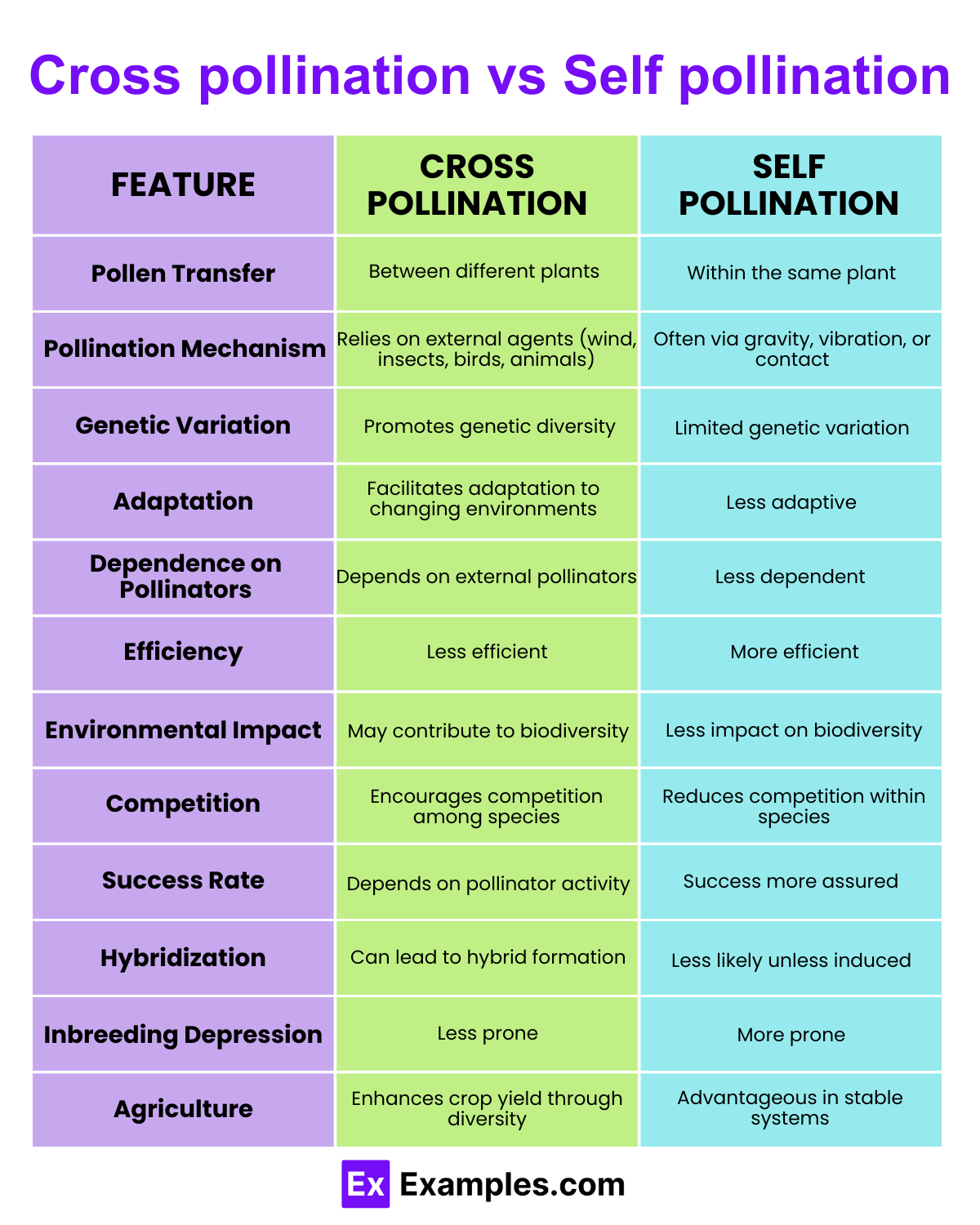What is the main difference between cross-pollination and self-pollination?
Cross-pollination occurs between two different flowers, while self-pollination occurs within the same flower
Cross-pollination involves insects, while self-pollination involves the wind
Cross-pollination produces sterile offspring, while self-pollination produces fertile offspring
Cross-pollination happens only in monocots, while self-pollination occurs only in dicots



